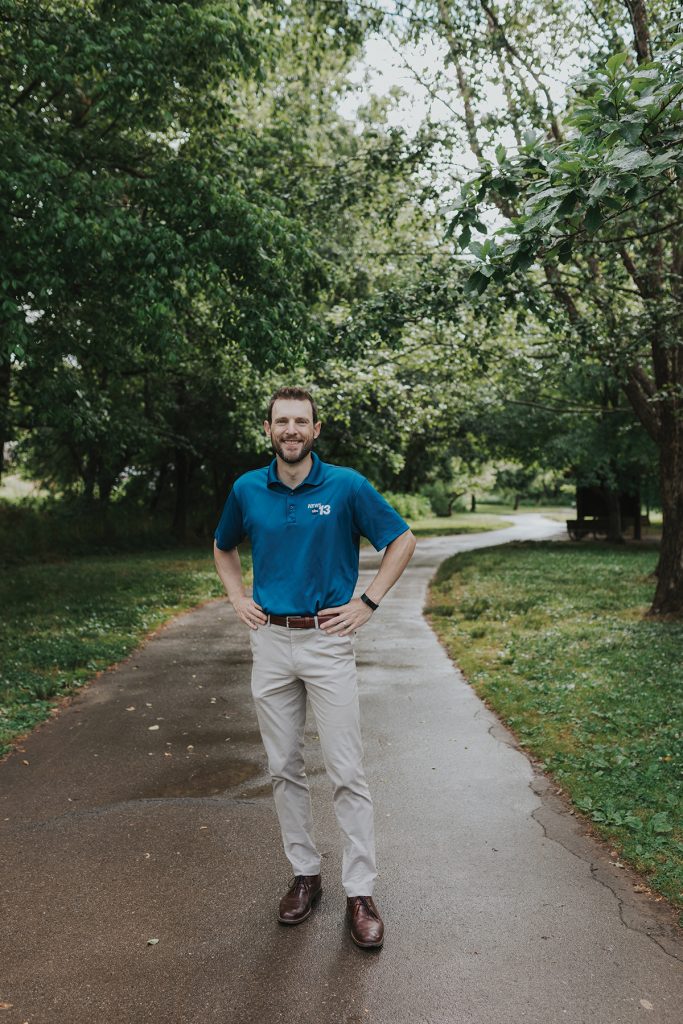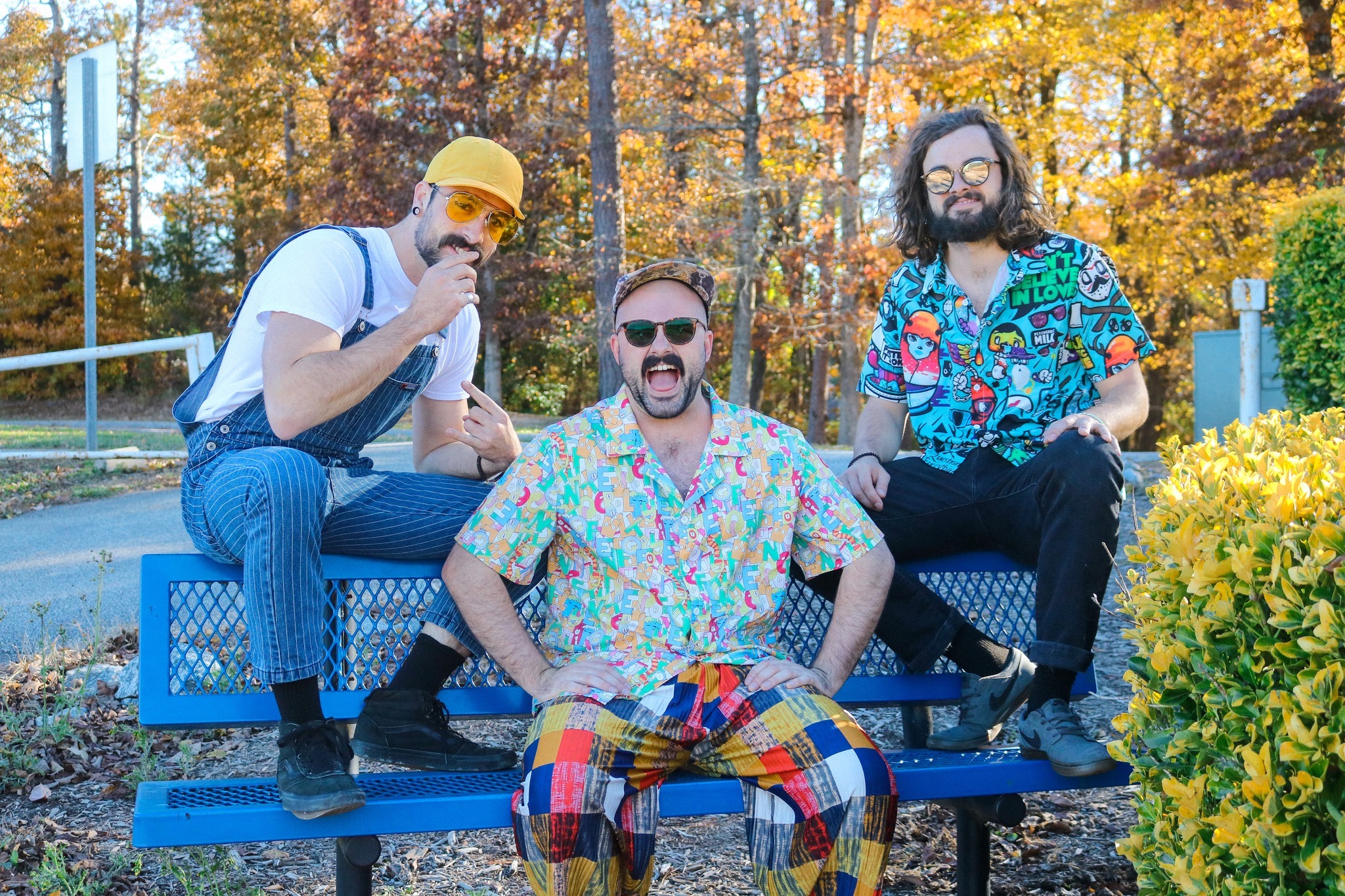Inside the difficulty of mountain forecasting
By Jarrett Van Meter

Meteorologist Jason Boyer tackles the Carolina Wedge.
Portrait by Rachel Pressley
Toward the end of May, Western North Carolina saw near-record-low temperatures. But by mid June, nineties were again in sight. WLOS & WMYA Chief Meteorologist Jason Boyer will help demystify WNC weather when he presents a lecture this month via the Blue Ridge Center for Lifelong Learning.
How did you first get interested in weather?
I’ve always been interested in the Earth Sciences. I was a kid of the ’80s, so I spent a lot of my time outside playing around. … When I was in third grade, a tornado went through my neighborhood [in Highland, Illinois]. It didn’t do much damage to our house, but my friend’s house — that was literally in the backyard, across to another street — his whole roof was ripped off … I remember it like it was yesterday.
How was the weather there different than here?
The Mississippi River Valley is kind of a bowl that traps humidity, and we could easily get into the nineties many days of the year in the summer. The seasons were pretty distinct. We had hit-or-miss snows … kind of like Asheville, [where] it either snows a lot or doesn’t snow at all. It was all or nothing.
But what makes the weather here so challenging to predict?
Not only do the differences in topography create many of what we call microclimates, but we are also in a unique position latitudinally and longitudinally … close enough to the Gulf of Mexico that we get Gulf moisture a lot of times in the summer … and also close to the Atlantic, where that moisture reaches us as well. … We are influenced by things all over the Northeast, [including] high pressure wedging down cool air, giving us the “Carolina Wedge.”… We have such biodiversity here, too. There’s so much growing here that the water and weather we get is vital to how this area looks.
What time of year is the most challenging for a meteorologist?
Hands down, it’s winter. We get a mix of ice, sleet, and snow, and we can have all of them in one storm, which already makes it hard enough to predict, but trying to predict the timing of it, what will fall and how much, is extremely difficult. I mentioned the microclimates earlier, and because of those, everyone gets something different, typically. It’s very rare that it’s just a straightforward winter storm of “all snow, 6-10 inches for everybody, let’s go home.”
What are you hoping people will get out of your class?
I’m a statistics guy; I’m fascinated by all kinds of weather statistics, and I hope people gain an appreciation for how unique our weather is here, and our climate. I want it to be fun. I hope they gain some knowledge of not just day-to-day weather, but [the Western North Carolina] climate — it’s a unique climate, and it’s a fragile climate.
The Blue Ridge Center for Lifelong Learning presents “Forecasting the Weather with Jason Boyer” on Tuesday, July 13, 10-11am, via ZOOM. $10/members, $15/nonmembers. Mail in registration by July 12 to BRCLL, 180 West Campus Drive, Flat Rock. For more information, call 828-694-1740 or see brcll.com.



